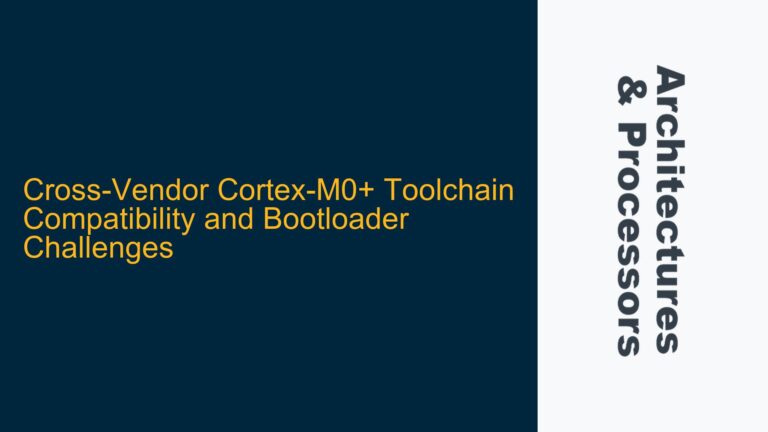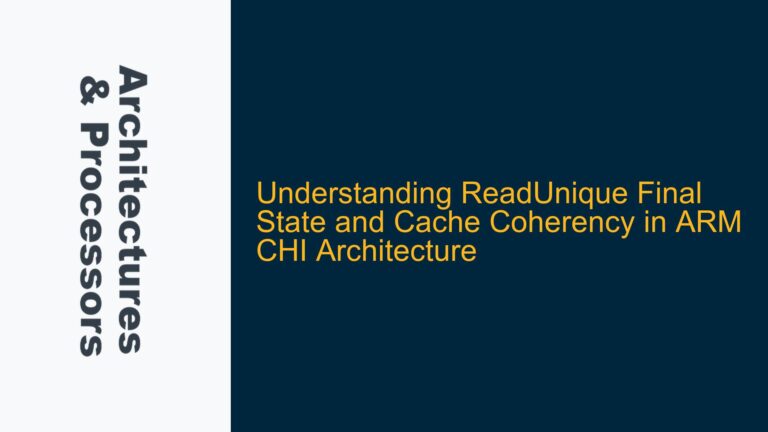Non-Contiguous Memory Allocation in ARM FVP Host Address Space
When attempting to remap Linux Host PCI memory into an ARM Fixed Virtual Platform (FVP) running Linux in the non-secure world, a significant challenge arises due to the non-contiguous allocation of pages in the FVP’s host address space. The FVP allocates pages that are adjacent but not contiguous, with small gaps presumably reserved for internal bookkeeping. This non-contiguity poses a problem for remapping large chunks of host memory into the FVP, as the remapping process requires a contiguous memory region.
The primary issue stems from the FVP’s memory management mechanism, which does not guarantee contiguous allocation of pages in the host address space. This behavior is influenced by the underlying memory management unit (MMU) and the way the FVP handles memory allocation requests. The gaps between allocated pages can vary in size, and their presence complicates the remapping process, especially when dealing with large memory regions.
To address this issue, it is essential to understand the factors contributing to the non-contiguous allocation. The FVP’s memory allocation strategy is influenced by several factors, including the page size, the memory management policies, and the specific configuration of the FVP. For instance, the default page size used by the FVP may lead to fragmentation, resulting in non-contiguous allocations. Additionally, the FVP’s internal bookkeeping mechanisms may reserve small regions of memory for metadata, further contributing to the fragmentation.
Impact of Page Size and Memory Management Policies on Contiguity
The page size used by the FVP plays a crucial role in determining the contiguity of memory allocations. By default, the FVP may use a smaller page size, such as 4KB, which can lead to increased fragmentation and non-contiguous allocations. Switching to a larger page size, such as 64KB, can potentially reduce fragmentation and improve the likelihood of contiguous allocations. This is because larger page sizes reduce the number of individual allocations required for a given memory region, thereby decreasing the chances of gaps between allocated pages.
However, increasing the page size is not a guaranteed solution, as it depends on the specific memory management policies implemented by the FVP. The FVP’s memory management unit (MMU) may still introduce gaps for internal bookkeeping, even when using larger page sizes. Additionally, the FVP’s configuration options, such as the cluster0.has_64k_granule parameter, can influence the allocation behavior. Enabling this parameter and recompiling the kernel with 64KB pages may improve the contiguity of allocations, but it is essential to verify this behavior through experimentation.
Another factor to consider is the FVP’s memory allocation algorithm, which may prioritize certain allocation patterns over others. For example, the FVP may allocate memory in a way that minimizes internal fragmentation but still results in non-contiguous regions. Understanding the FVP’s allocation algorithm and its impact on contiguity is crucial for developing effective solutions.
Strategies for Achieving Contiguous Memory Allocation in ARM FVP
To achieve contiguous memory allocation in the ARM FVP, several strategies can be employed, each with its own advantages and limitations. One approach is to modify the FVP’s memory allocation behavior by adjusting its configuration parameters. For instance, enabling the cluster0.has_64k_granule parameter and recompiling the kernel with 64KB pages can increase the likelihood of contiguous allocations. This approach leverages the larger page size to reduce fragmentation and improve contiguity.
Another strategy is to use the FVP’s debug options and tools, such as GDB, to monitor and control memory allocation. By using GDB, it is possible to inspect the memory allocation patterns and identify the causes of non-contiguity. This information can then be used to adjust the FVP’s configuration or modify the memory allocation algorithm to achieve contiguous allocations. Additionally, GDB can be used to manually allocate large contiguous memory regions, bypassing the FVP’s default allocation mechanism.
A third approach is to implement a custom memory allocator within the FVP that ensures contiguous allocations. This custom allocator can be designed to allocate memory in large, contiguous chunks, avoiding the fragmentation issues associated with the default allocator. Implementing a custom allocator requires a deep understanding of the FVP’s memory management mechanisms and may involve modifying the FVP’s source code. However, this approach provides the most control over memory allocation and can be tailored to specific requirements.
Finally, it is important to consider the use of memory-mapped I/O (MMIO) techniques to remap host PCI memory into the FVP. MMIO allows direct access to host memory from the FVP, bypassing the need for contiguous allocations in the FVP’s address space. By mapping host memory regions directly into the FVP’s address space, MMIO can provide a seamless and efficient way to access host resources without the constraints of non-contiguous allocations.
In conclusion, achieving contiguous memory allocation in the ARM FVP requires a combination of configuration adjustments, debugging tools, custom allocators, and MMIO techniques. By understanding the factors contributing to non-contiguity and employing the appropriate strategies, it is possible to overcome the challenges associated with remapping host PCI memory into the FVP. Each approach has its own trade-offs, and the optimal solution depends on the specific requirements and constraints of the project.






